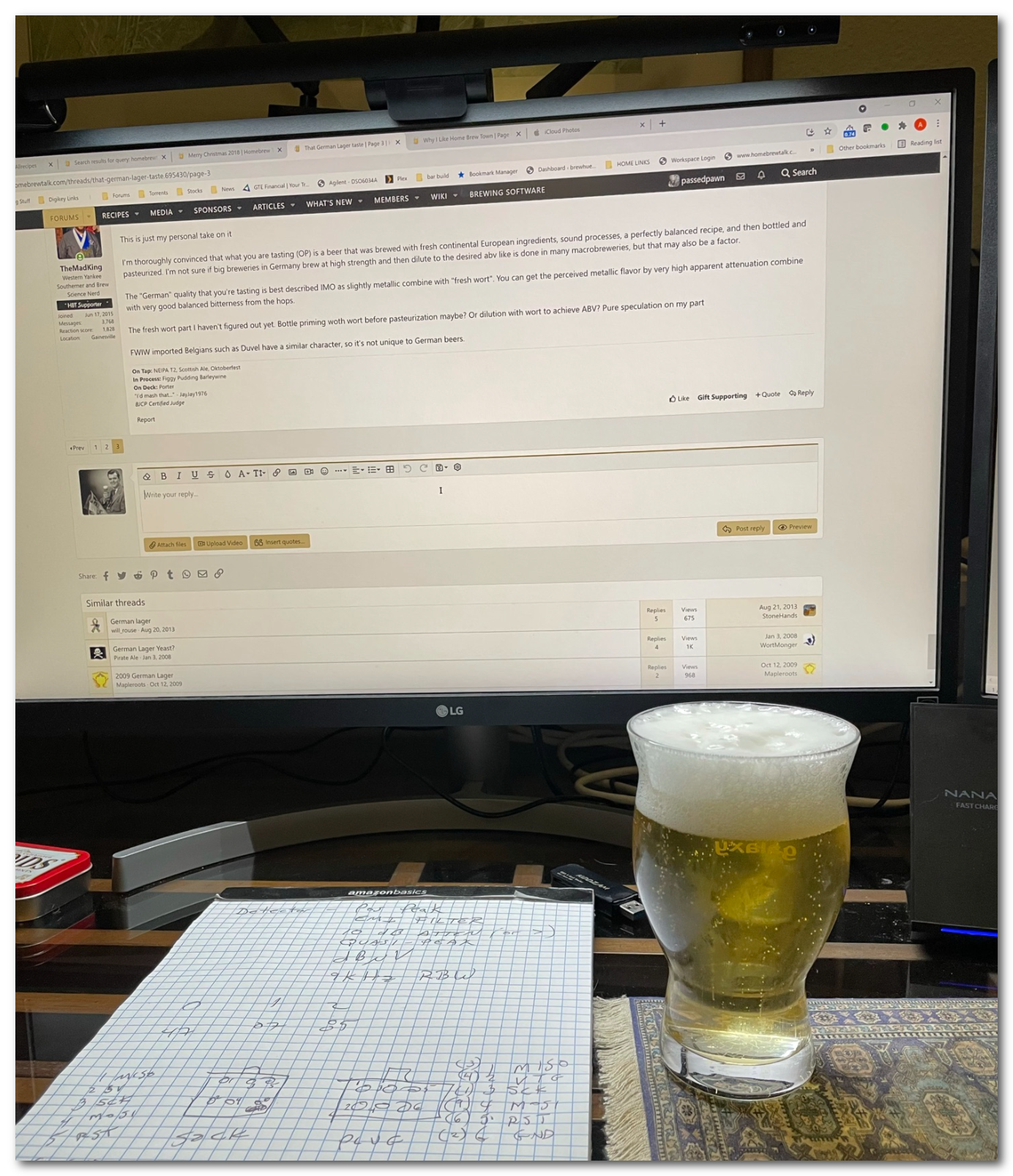You are missing the point. The question was literally "what needs to be done to get this German flavour?" And we all agreed that "lodo" is not on the list of necessities to get this German flavour.
That's it.
The OP mentions these beers as beers demonstrating this "flavor" he/she is seeking:
Weihenstephaner Original
Paulaner Münchner Lager
Spaten Oktoberfestbier
Ayinger Oktober Fest Märzen
These are beers brewed on the most modern and sophisticated of equipment. These are not antique breweries using equipment from 30 years ago, let alone 50 or 100.
Focusing on fresh high quality ingredients, recipe and mash regimes constructed to achieve apparent attenuation of 84%, fermenting at temperatures from 48-52F, using a quality lager yeast and pitching at a ratio of 2.5m/mil, use of sauergut for mash pH control and at the end of boil to drop pH to ensure greater efficacy of kettle finings and for flavor contributions, oxygenating as high as perhaps 18ppm immediately before pitching yeast, and YES mitigating oxygen throughout the brewing process from strike water through packaging (more of a necessary focus for homebrewers due to the size of our vessels vs. professional) will get you the flavors the above beers deliver.
There are lots of levers brewers can choose to pull... the ones mentioned above will yield beers that taste like what the OP was drinking.
Perhaps just Sauergut (or maybe even sauermalz) in concert with good german ingredients will yield a result pleasing to the OP.
But again, some of the things above, and mentioned elsewhere in this thread, are offered as other levers that a brewer could choose to implement if results are not meeting expectations...
No mandates, but they are offered for folks to consider who don't think their beers are tasting as they would like them too.


















![Craft A Brew - Safale S-04 Dry Yeast - Fermentis - English Ale Dry Yeast - For English and American Ales and Hard Apple Ciders - Ingredients for Home Brewing - Beer Making Supplies - [1 Pack]](https://m.media-amazon.com/images/I/41fVGNh6JfL._SL500_.jpg)








































